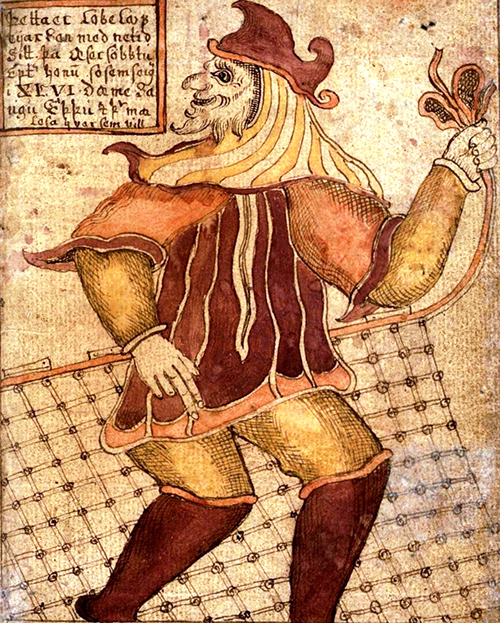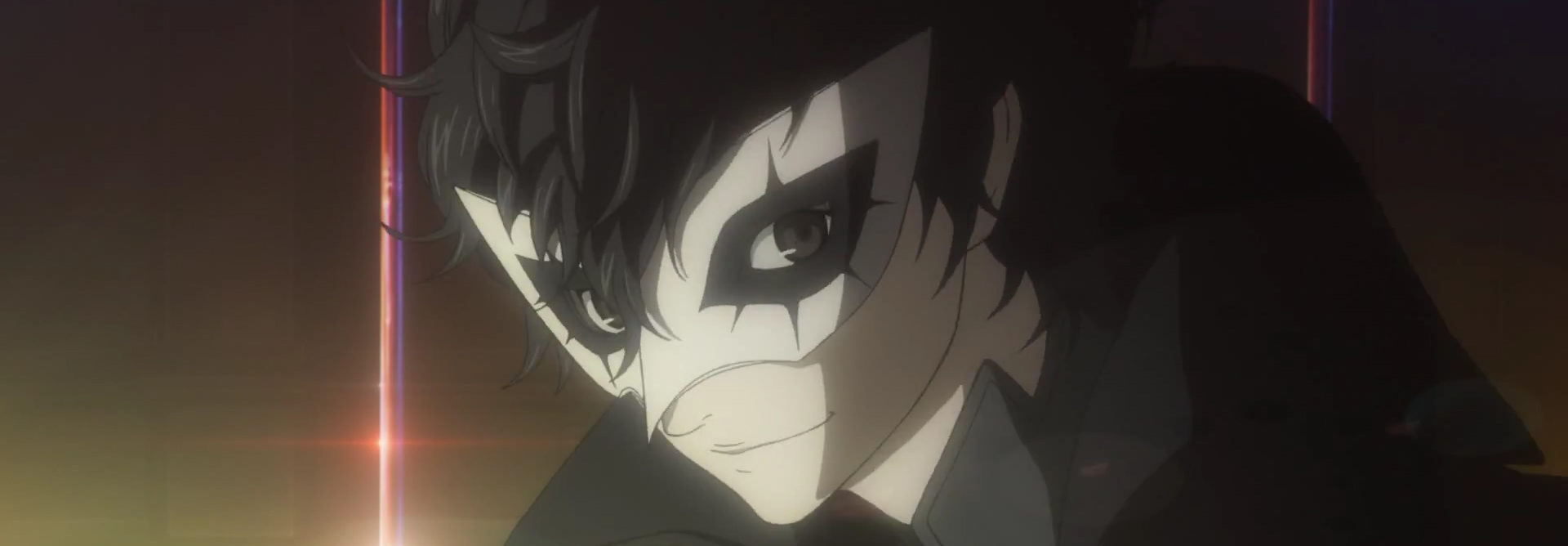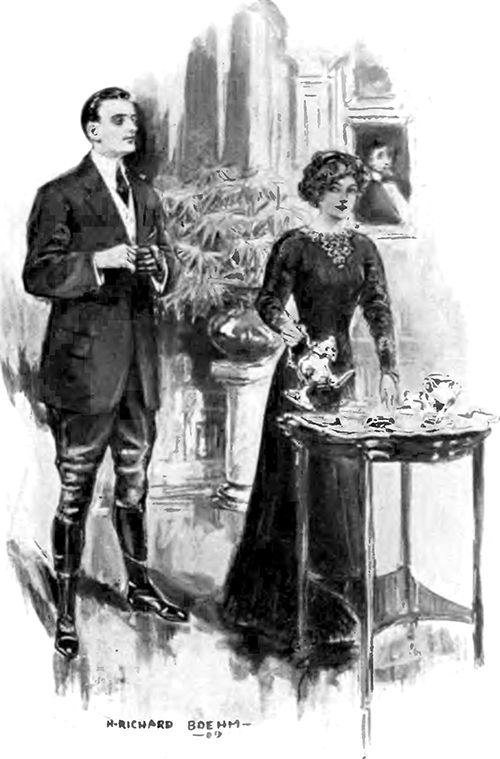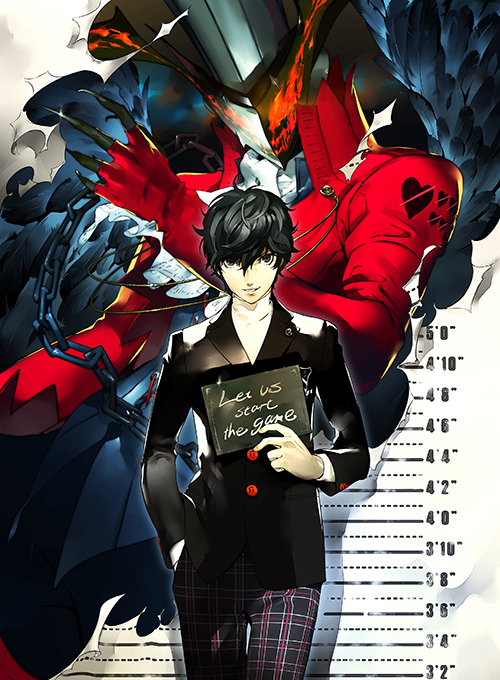In his book Trickster Makes This World: Mischief, Myth, and Art, scholar Lewis Hyde describes the archetypal trickster as a “boundary-crosser.” In Persona 5, Joker’s power is directly tied to his ability to permeate unseen and thus mostly impenetrable barriers—specifically, the game’s Metaverse.
Although Joker’s title may seem to be little more than a nickname assigned to him by his friends, it’s symbolic of a much wider literary tradition. Tricksters are recurring character archetypes sporadically interspersed throughout religions and mythologies from all over the world. Loki, the Norse god of mischief, is just one example. Homer’s Odysseus is another, memorably telling the cyclops Polyphemus that his name is “no one,” so when the giant eventually calls for help, he says that nobody is attacking him. As Jesuit scholar Robert Pelton once wrote in The Cambridge Companion to Jung, “the trickster is a symbol of the liminal state itself, and of its permanent accessibility as a source of recreative power.”

The Metaverse is emphatically liminal, which is to say that it’s a place of transition and transformation. Derived from the Latin word for “threshold,” liminal states were traditionally linked to rites of passage. Contemporary examples are slightly less formal. A car park is liminal, as it’s a place you temporarily visit in order to arrive at a separate destination. Airports can be considered in a similar vein. The few hours you spend there are strange, even obscene, and outside of existing as a place between places, they’re essentially devoid of purpose for travelers. Remaining in liminal states for too long can be disconcerting and uncomfortable, primarily because they’re designed to be temporary.
The Metaverse is a particularly special liminal state though. As Carl Jung once wrote, “Until you make the unconscious conscious, it will direct your life and you will call it fate.” Due to the fact that the Metaverse itself is a manifestation of the collective unconscious, Joker has the ability to influence reality by acting in the Metaverse. Throughout Persona 5, he makes the unconscious conscious by changing people’s hearts in Mementos and taking down Palaces built from the unconscious desires of society’s most corrupt. However, his ability to control liminal states goes much further.
Jung also conceptualized classical archetypes, which he saw as recurring patterns embedded in the collective unconscious. One such archetype is the trickster, who uses deception and cunning to outwit his adversaries in strange and unusual ways. In some cases, the trickster is a foolish person who uses their intelligence for selfish or malicious purposes. In others, they become heroes.
Joker’s arcana in Persona 5 is that of The Fool. The in-game song “Beneath The Mask” actually refers to this with its lyrics, specifically the sweetly sung refrain of “I’m a shape-shifter, at Poe’s masquerade.” Joker, like many other tricksters throughout history, is a shape-shifter, having the ability to use every single known Persona in the Metaverse. The part about Poe likely refers to Joker’s stylish eyewear, evoking the macabre aesthetic of Edgar Allen and drawing attention to the mask as an inherent part of the trickster archetype: Joker’s face is covered, disguising his true intentions and distinctly marking his status as an anomaly.

Credit: Atlus
In Persona 4, Margaret explains that “The Fool arcana does not mean that it can be taken lightly. The Fool is number zero. It is the void from which all other things begin.” This idea of a void ties in with Pelton’s earlier idea of using liminal states as a source of recreative power. As number zero, the trickster is at home in chaos. Aside from Arsene—the Persona who inducts Joker into the Fool arcana at the beginning of the game—the other Personas tied to the Fool include deities of mischief like Dionysus and Vishnu. The former is the Olympian god of wine, ecstasy, and madness, whereas the latter is the Hindu god due to appear 10 times across time and space in order to preserve the universe. In Persona 5, Vishnu appears and bellows, “I am the manifestation of thine heart, thine invincible mask.” According to Hindu belief, three of Vishnu’s 10 forms will be animalistic, resembling a boar, a fish, and a tortoise, which is a detail that likens his shape-shifting abilities to those of Joker.
Although these deities from religion and mythology align with the trickster archetype, Arsene is the most important Persona to consider when viewing Joker as a classic trickster. Based on the fictional Arsène Lupin, the gentleman thief first penned by French author Maurice Leblanc in 1905, Arsene is one and the same as Joker’s inner self. When he first appears to Joker at the beginning of the game, he exclaims:

“Thou who art willing to perform all sacrilegious acts for thine own justice! Call upon my name, and release thy rage! Show the strength of thy will to ascertain all on thine own, though thou be chained to Hell itself!”
The concept of performing “sacrilegious acts” for Joker’s “own justice” perfectly fits Lupin’s characteristics, as the gentleman thief was a sort of Robin Hood type, albeit a more stylish and noble version of the Merry Men’s leader. In Persona 5, Arsene is more visually comparable to a villain, what with his masquerade aesthetic and unique brand of vigilantism. However, he’s a true antihero in that he primarily targets people more villainous than he. He has become monstrous to defeat monsters, which isn’t unlike Joker’s conviction in becoming a Phantom Thief to steal the hearts of the evil.
The Robin Hood analogy is particularly important to consider here, as the most prominent argument for Joker’s status as a classic trickster lies in his opposition with Goro Akechi. While Joker is a mute protagonist who spends more time fixing his glasses than acting out in ostentatious bursts of bravado, Akechi is obsessed with presenting an ornately embellished image of himself, even if it’s at odds with his actions. Although he temporarily becomes a Phantom Thief, he never sees himself in the same way he views the others. He is noble, a champion of justice, an utterly unparalleled detective eliciting change for the better. Robin Hood, Akechi’s Persona, is a traditionally musical and self-assured person who believes that his “steal from the rich, give to the poor” mantra is above the law. In a similar vein, Akechi has the conviction to believe that anything he does is acceptable once it’s in line with his own personal brand of justice. Interestingly and importantly, Akechi is the confidant attached to the Justice arcana.
Akechi doesn’t stay as Robin Hood for long though. In Shido’s palace, where he decides to betray the Phantom Thieves due to his desire to destroy Japan in order to reconstruct it based on his ideal justice system, Akechi demonstrates that he too has the ability to conjure multiple Personas. It’s at this point that you realize Akechi is also a trickster, although not the same kind as Joker. Akechi is the foolish trickster too obsessed with selfish gain to ever truly master his powers. Joker is Arsène Lupin, the quiet gentleman thief who uses his recreative, liminal power to enact positive change on the world around him.

Ulysses Fleeing the Cave of Polyphemus, 1812
When Akechi realizes that he has the ability to drive Shadows in Mementos berserk, for example, he decides to share this knowledge with Shido. Together, they wreak havoc on the real world from the safety of Mementos, all the while attempting to frame the Phantom Thieves for their atrocities. Akechi also pretends to solve these cases, catapulting his popularity while causing that of the Phantom Thieves to plummet.
Compare this with Joker’s decision to act as a decoy—in true trickster fashion—after Akechi betrays his companions and allows the police to enter the Metaverse. Joker ends up getting caught in order to save his friends, whereas Akechi—who orchestrated the police invasion—spinelessly escapes under the pretense that he, too, is a member of the Phantom Thieves. Another point of comparison can be seen in their posture: While Akechi shares a standing animation with Joker, the latter seems to slowly sway, as if at ease. On the contrary, Akechi becomes absolutely still, signalling his status as a trickster that is less at home in chaos than Joker.
Akechi’s second Persona—Loki—is stylistically opposite to his Robin Hood one. While Robin Hood dons a sleek, elegant red-and-white outfit, Loki sports a blue-and-black garb, revealing a reversion of his allegiances. One on hand, this could be a visual indication of his decision to betray the Phantom Thieves. However, it could also signify that unlike Joker, Akechi doesn’t have mastery over his shape-shifting, causing him to reveal his true self involuntarily and prematurely.
In the end, Akechi learns from Joker’s mastery of the trickster archetype and redeems himself. Despite envying the protagonist for his popularity, Akechi also admires him for his sympathy and sheer talent. Even after he betrays the Phantom Thieves, Joker extends an olive branch to him, stating that they still need him to take Shido down. Inspired, the disgraced Akechi goes on to defeat the version of himself rooted in Shido’s cognition, giving the rest of the party time to escape with their lives.

Credit: Atlus
Joker learns near the end of the story that Igor—now revealed to be the deific Yaldabaoth—gave Akechi his Wild Card at the same time he offered one to Joker. He pitted the two tricksters against one another in order to determine what was stronger: a desire for destruction or rebellion. Ultimately, Yaldabaoth had already decided that he wanted to plunge the world into perpetual apathy, but Joker’s mastery of the Fool arcana allows him to overcome the all-powerful deity by calling upon the ultimate trickster: Satanael. Often recognized as an iteration of Lucifer himself, this is a primordial from of the fallen angel prior to having the -el suffix—marking an angel—stripped from him by the archangel Michael.
Interestingly, similarly to the way in which Joker is based on Arsène Lupin, Akechi is potentially derived from Kogoro Akechi, the detective created by Edogawa Ranpo in 1925. It’s important to recognize that Akechi is based on a detective, while Joker is based on a gentleman thief. However, their roles are paradoxically opposite, with Akechi being an antagonist and Joker a champion of justice.
Although Ranpo’s Akechi was unsubtly based on Arthur Conan Doyle’s illustrious Sherlock Holmes stories, the introduction to the English-language collection The Early Cases of Kogoro Akechi describes the detective’s nemesis as “more of an Arsène Lupin than a Moriarty”—another indication of how the two are destined to be adversaries who share a mutual admiration for one another from the very beginning of the story.
In Persona 5, Joker is clearly an archetypal trickster not unlike traditional heroes such as Hermes, Odysseus, Loki, and Arsène Lupin. However, the most prominent form in which this is showcased is by considering his complex relationship with Goro Akechi. The two characters are two sides of the same coin: the foolish trickster and the cunning one. The foolish is loud, ostentatious, and ruthless, whereas the cunning is sharp, relaxed, and relentless. In Persona 5, Joker is unequivocally the latter, earning him his place in the parade of fools tasked with taking action when liminality itself begins to take over.
When all else seems lost, it is the gods of mischief that must step up to the plate, as they’re in their element in chaos. And if you doubt Joker’s mischievous capabilities, just remember how many times he mentions he got expelled while wearing eye-obscuring glasses and nonchalantly posing in a hands-in-pockets half-shrug.
Header image: Atlus, Nintendo.

Cian Maher is a freelance writer from Dublin who spends more time replaying games than playing new ones. Follow him on Twitter @cianmaher0.